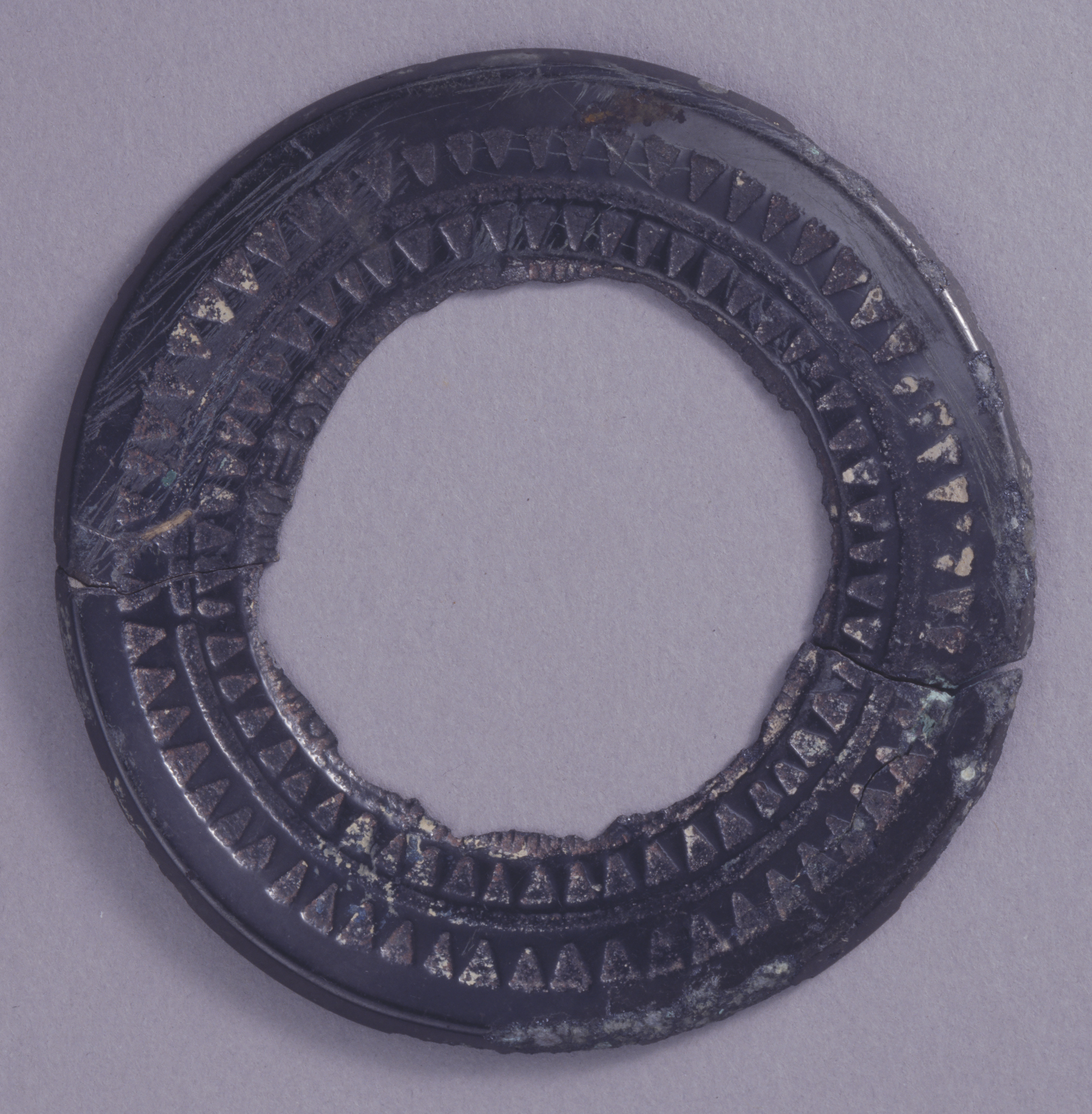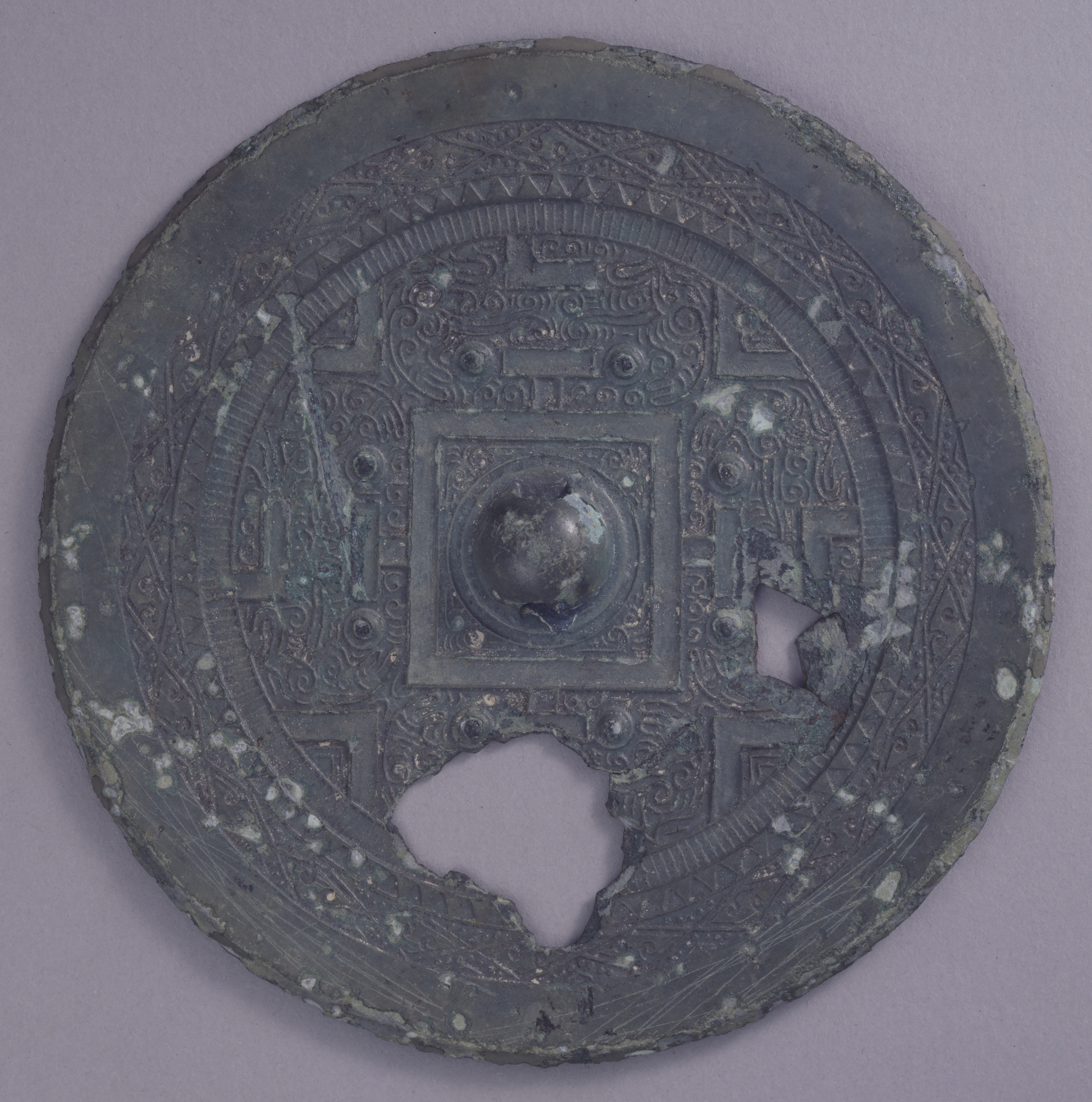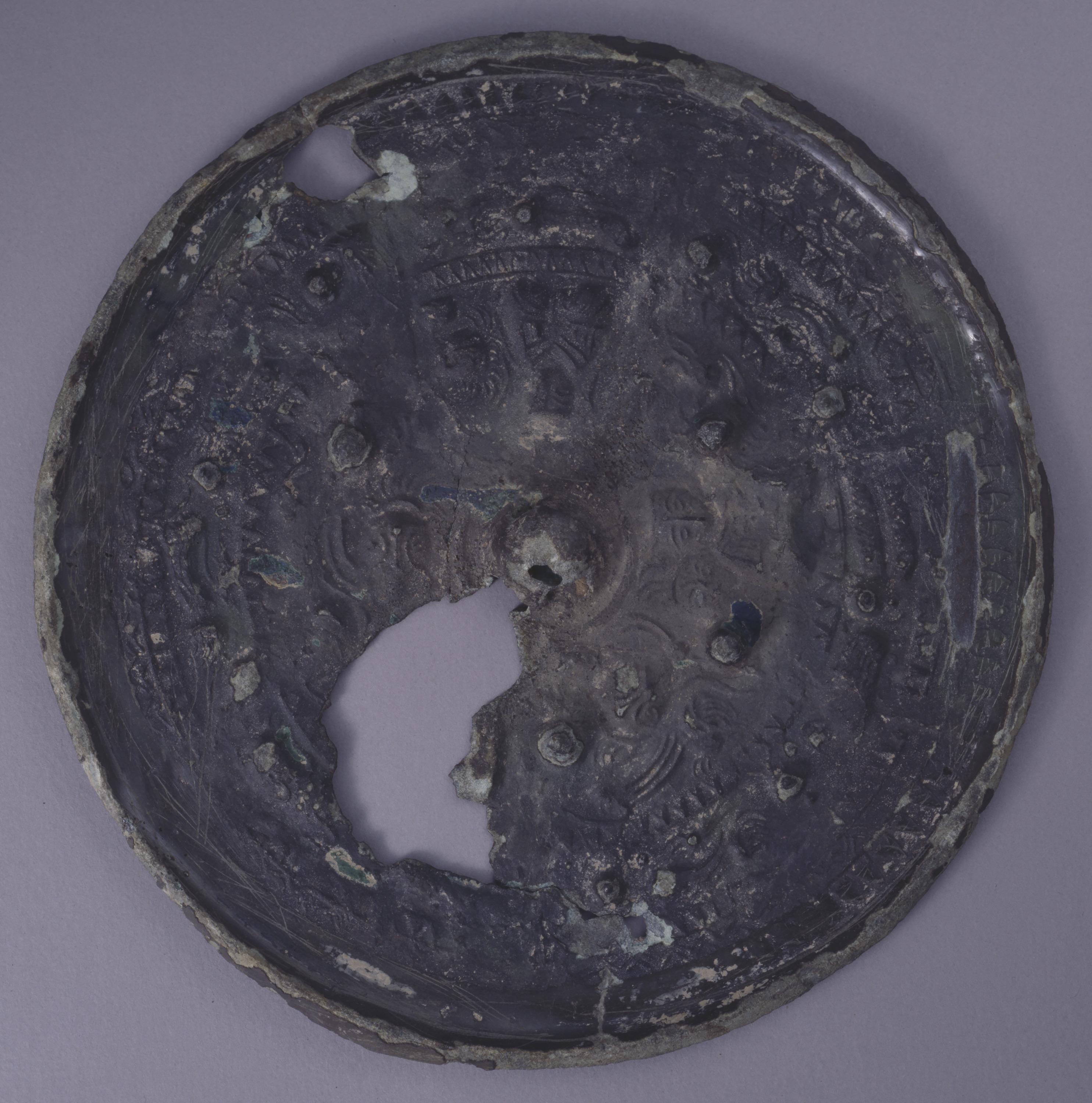- TOP
- Excavated Artifacts
Overview
Excavated Artifacts
- Museum No.
- JK288
Showing 1-6 of 4
| Title | Excavated Artifacts |
|---|---|
| Designation | |
| Artist | |
| Category | Archaeology(J), Yayoi-Kofun Bronze Mirrors |
| Country | Japan |
| Period | Kofun (Tumulus) |
| Century | 4th |
| Year | |
| Quantity | |
| Materials | |
| Dimensions | |
| Inscription by | |
| Signature/Seals Etc | |
| Donor |
Included Works
 Mirror with Triangular Rim, Characters in Band, and Four Gods and Four Animals
Mirror with Triangular Rim, Characters in Band, and Four Gods and Four Animals
JK288-1 Mirror with Triangular Rim and Two Gods and Two Animals
Mirror with Triangular Rim and Two Gods and Two Animals
JK288-2 Mirror with Triangular Rim, Animals in Band, and Three Gods and Three Animals
Mirror with Triangular Rim, Animals in Band, and Three Gods and Three Animals
JK288-3 Mirror with TLV Pattern and Animals
Mirror with TLV Pattern and Animals
JK288-4 Mirror with Wave Rim Pattern
Mirror with Wave Rim Pattern
JK288-5 Comma-shaped Bead
Comma-shaped Bead
JK288-6 Cylindrical Beads
Cylindrical Beads
JK288-7 Bracelet Fragment Excavated
Bracelet Fragment Excavated
JK288-8
JK288-9
JK288-10
JK288-11
This object may be one within a set or the title of a set. To see all objects in the set, perform a Category Search by the Museum Number below, entering numerals only before the hyphen.









Mirrors, which were brought to Japan from the Korean Peninsula and China during the Yayoi period (ca. 400 B.C.-ca. A.D. 250), served as important ceremonial implements for rituals from the Yayoi through the Kofun (ca. 250-ca. 600) periods. The faces of the mirrors were generally convex and polished with mercury, while the backs were decorated with various designs with a knob attached in the center to pass a string through. Mirrors are usually exhibited to show the decorations on the back, but these works are displayed face up.
Japan-Kofun (Tumulus)